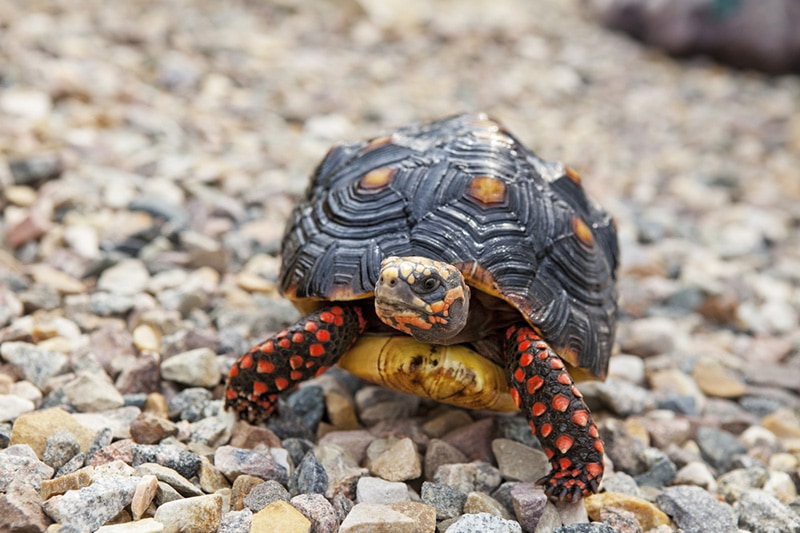12 Incredible Turtle Facts You’ll Be Surprised to Know

By Misty Layne
Updated on
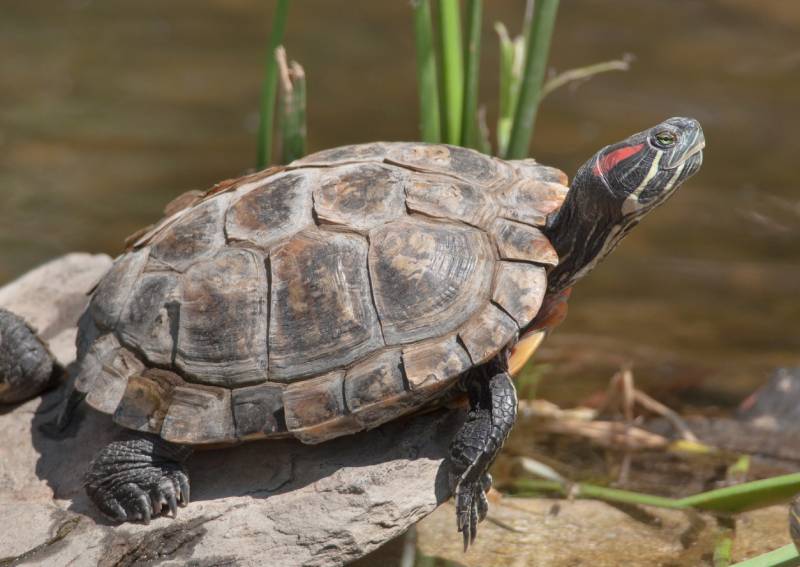
Turtles are fascinating creatures (and cute!), but how much do you really know about them? You likely know there are many different types of turtles and that turtles are rather slow when they move. But there’s a lot more to these reptiles than just that. For example, did you know that the temperature can influence a turtle’s gender?
If you’re ready to learn more turtle facts, you’ve come to the right place. We’ve gathered 12 incredible turtle facts that will surprise you, so keep reading to shore up your turtle knowledge!
1. Turtles have been around forever.
When you think of dinosaurs, you might not imagine turtles plodding along or swimming next to them, but you should! Turtles have been on the planet for over 200 million years; in fact, the earliest known one (to have a hard shell that was fully formed, at least) was alive approximately 210 million years ago. There’s evidence there were turtles before that, too, as in 2008, remains of one dating back even earlier were discovered in China. Plus, evidence has been found of a shell-less turtle living in Africa dating back 260 million years ago!
2. The way a turtle retracts its neck decides how it is grouped.
One thing everybody knows about turtles is that they can draw their necks and heads into their shells. But did you know the way a turtle does this decides which of two groups of turtles it belongs to? Turtles can be either hidden-necked or side-necked; hidden-necked turtles are the ones that can bring their necks and heads fully into the shell, while side-necked turtles actually bend the neck sideways (ouch!), making it so their heads are able to fit between the front legs. And because side-necked turtles can’t fully draw in their necks and heads, their shells hang over the front of their bodies a bit more, so they can stay protected.

3. Turtles live on all the continents except Antarctica.
Turtles are a wildly varied bunch. Some live in water, and some live on land. And no matter where they live, turtles adapt what they eat to match their habitats. This is why turtles are found on each of the continents minus Antarctica. Though they are found on almost all the continents, the majority are found in South Asia and the southeastern parts of North America. And only five turtle species can be found living in Europe!
4. These reptiles aren’t a nurturing bunch.
We tend to assume that when an animal has babies, they take care of them for at least a little while after the babies are born or hatched. But this isn’t true for turtles; not a single species takes care of their young! Mama turtles will find a spot to lay eggs and dig out a nest there. Once they’ve laid their eggs, though, they’re gone, leaving those eggs behind. Once baby turtles hatch, it’s up to them to fend for themselves.

5. Temperature determines the gender of a turtle.
For many animals, the sex of a baby is determined at fertilization. However, that’s not what decides whether a baby turtle will be female or male. Instead, it all comes down to the temperature of the nest. If the temperature is under 81.86 degrees Fahrenheit, the babies will be male. But if the temperature of the nest is over 87.80 degrees Fahrenheit, they will be female. What happens if the temperature is between 81.86 and 87.80 degrees? Then the babies can be either sex!
6. Turtles can hear (sort of).
When you look at a turtle, there aren’t any obvious ears, right? But that doesn’t mean they’re entirely without hearing. Turtles actually do have middle ear bones and ear canals. The middle ear bones can be found behind a turtle’s skin flaps; it carries vibrations from noise and sounds down to the turtle’s ear canal. However, there’s a very thick membrane around the middle ear that greatly limits the range of audio frequency a turtle can pick up on. So, turtles can hear, sort of, just not as much as we can.
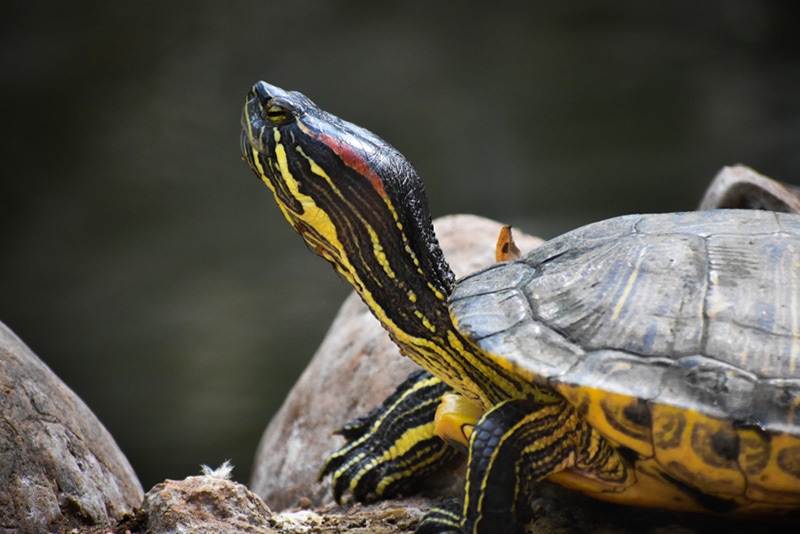
7. The shell of a turtle is made from its ribs.
Have you ever really thought about what makes up a turtle’s shell? It’s probably not what you thought! A turtle’s shell is part of its skeleton, so it is made up of bones (about 50–60 of them). And the carapace (or the domed part) is made from a turtle’s ribs and vertebrae! How is that possible? Well, when the rib bones are growing, they grow sideways and into flat sections. These sections then join and expand to cover a turtle’s back. Why does a turtle shell not look like ribs? It’s because there’s an outer layer made of keratin (what our fingernails and toenails are made up of!). The whole process is fascinating (and just a little creepy)!
8. Female turtles can store sperm.
Here’s an interesting turtle fact for you: females can and will store sperm for up to four years! This means that females can lay eggs at any point during the next four years after mating. Sperm is stored in tubes located in the posterior region of the oviducts; the widespread amount of these tubes in turtle species seems to indicate that storing sperm is important in the reproductive cycle of turtles.
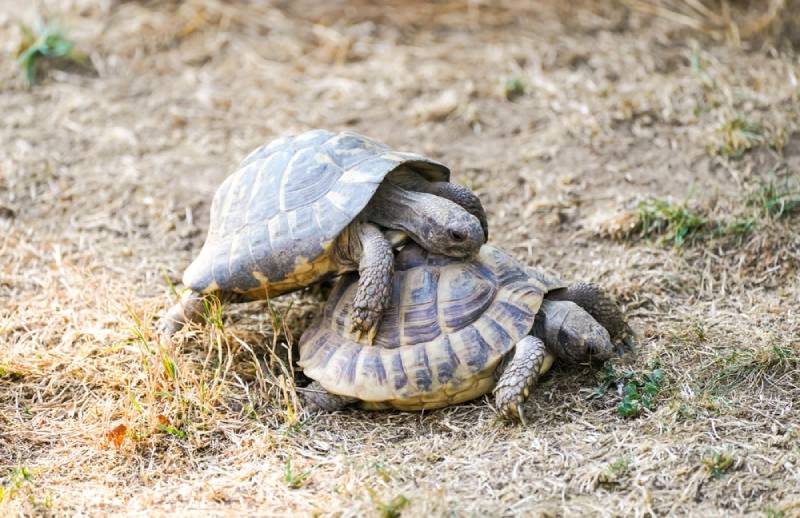
9. Some turtle migrations last thousands of miles.
A lot of turtle species will migrate seasonally, but they’ll normally only go a short distance (up to 20 miles from where they currently are). But not sea turtles! These turtles migrate yearly to reach their favorite spots to nest, sometimes traveling thousands of miles. In fact, sea turtles are pretty famous for how well they can navigate oceans. However, this doesn’t mean these turtles always reach where they’re going; occasionally, they can get incredibly lost!
10. Baby turtles are the only turtles with teeth.
Well, kind of. You probably already know that turtles don’t have teeth, but rather a beak they can use to tear up plants or crack the shells of crabs and clams so they can eat them. But there is an exception to this! Hatchlings have what is known as the “egg tooth”, which, as you might’ve guessed from the name, is what they use to crack out of their shells when hatching. However, this isn’t what we’d consider a real tooth. Instead, it’s just a hard, tiny bump they have that is made up of keratin.
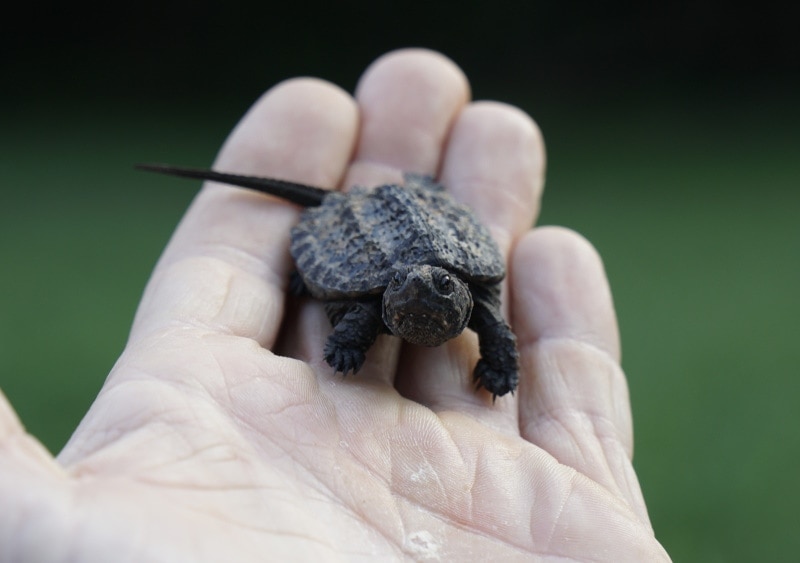
11. Turtles come in a variety of sizes
You’ve probably come across a turtle the size of your hand or smaller crossing the road. They tend to be only about 3 or 4 inches long. But have you ever met a turtle that was 10 feet long? The leatherback sea turtle can grow 10 feet long and weigh as much as 2,000 pounds! It’s the largest turtle species now, but in the past, there were turtles even larger than that (if you can imagine). The Archelon, which is now extinct, was also a sea turtle, but it grew to be up to 16 feet in length and 5,000 pounds in weight!
12. Approximately half of all turtle species are currently endangered.
Altogether, it’s thought that there are around 360 turtle species in the world. But at least 187 of those species are currently endangered or threatened, and more keep getting added to that list each year. The situation has grown so dire that the International Union for the Conservation of Nature has warned that many of these turtle species may become extinct by the close of the century unless action is taken.

Final Thoughts
There is a world of fascinating facts about turtles! Whether it’s the variety of sizes they come in to the fact mama turtles don’t take care of their babies, turtles are surprising and interesting animals. Hopefully, you learned more today than you knew before about these reptiles and can now share that knowledge with others so they’re better informed about turtles, as well.
- Related Read: Can Turtles Eat Eggs? Vet-Reviewed Nutrition Facts & FAQ
Featured Image Credit: Gerald A. DeBoer, Shutterstock


